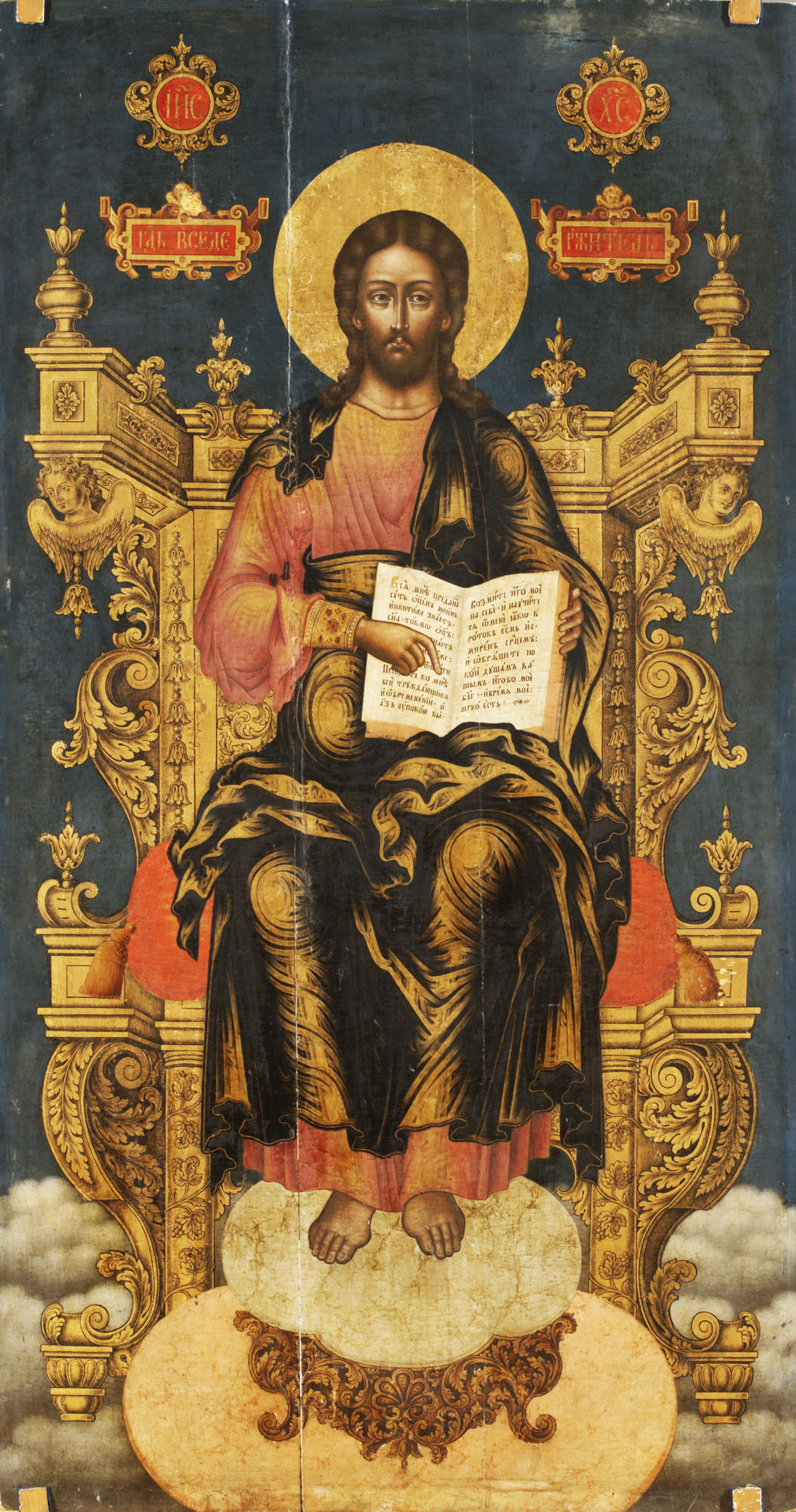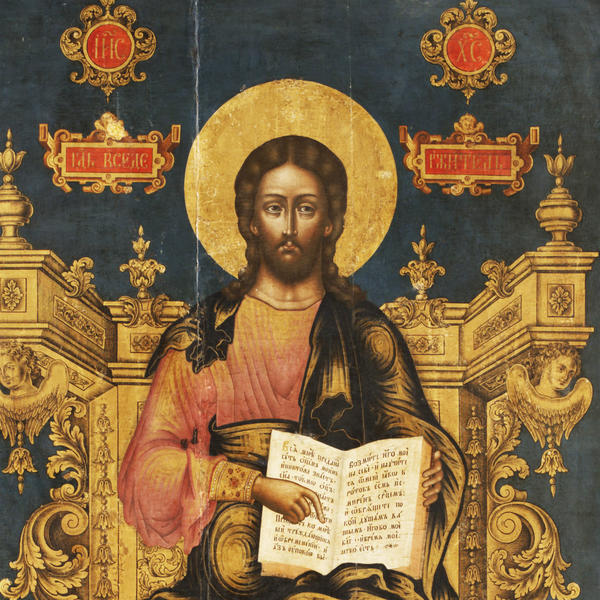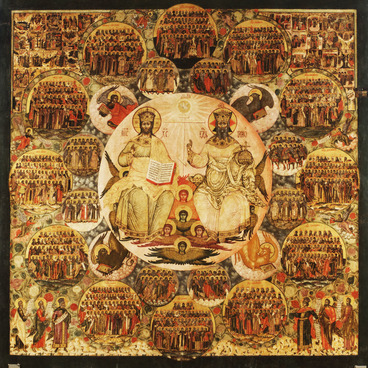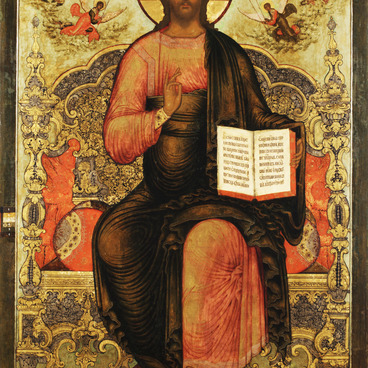The icon depicts Jesus Christ, sitting enthroned in glory. He is represented in full height. The clothes are painted in the traditional color scheme: himation (the outer clothing) is green, the chiton is crimson.
The Savior on the throne
Creation period
Mid-18th century
Dimensions
140x76 cm
Technique
Tempera
Collection
Exhibition
5
Open in app#1
Unknown author
The Savior on the throne
#2
#3
Clothes fall down in heavy folds. They were drawn by a special kind of strokes. On this icon, the artist drew them with gold, the folds seem to supplement the carving of the throne, giving the painting a solemn decorative look. The background of the image is of deep blue color. Such paint was often used for the background in 18th century in painting of icons.
#4
The ornament of the golden throne on which Christ sits is written in the Baroque traditions: perfect symmetry and lush decor with floral garlands, plenty of curls, vases and stucco angelic faces. The image of the Divine throne matched with the carvings and sculptural decorations of the gilded iconostasis of the Nadeyinsky Temple of Yaroslavl. It was in it, where the icon was mounted to the right of the holy gates.
#5
The Novgorod text also mentions that the Lord’s right hand was originally depicted in a blessing gesture. One day emperor Manuel, who allegedly painted the icon, ordered to put in prison a guilty priest. At night, Christ came to the sleeping Manuil in his dream: He told the emperor that he was acting improperly by interfering in the affairs of the church. Jesus ordered angels to punish the king. When Manuel woke up, he saw wounds on his body. And the hand of the Savior on the icon miraculously changed its position: Christ pointed to the Gospel. The emperor immediately released the priest and asked him in public for forgiveness.
The Novgorod text also mentions that the Lord’s right hand was originally depicted in a blessing gesture. One day emperor Manuel, who allegedly painted the icon, ordered to put in prison a guilty priest. At night, Christ came to the sleeping Manuil in his dream: He told the emperor that he was acting improperly by interfering in the affairs of the church. Jesus ordered angels to punish the king. When Manuel woke up, he saw wounds on his body. And the hand of the Savior on the icon miraculously changed its position: Christ pointed to the Gospel. The emperor immediately released the priest and asked him in public for forgiveness.
#6
Yaroslavl Museum Reserve
read morehide
00:00
00:00
1x
The Savior on the throne
Creation period
Mid-18th century
Dimensions
140x76 cm
Technique
Tempera
Collection
Exhibition
5
Open in app
Share



